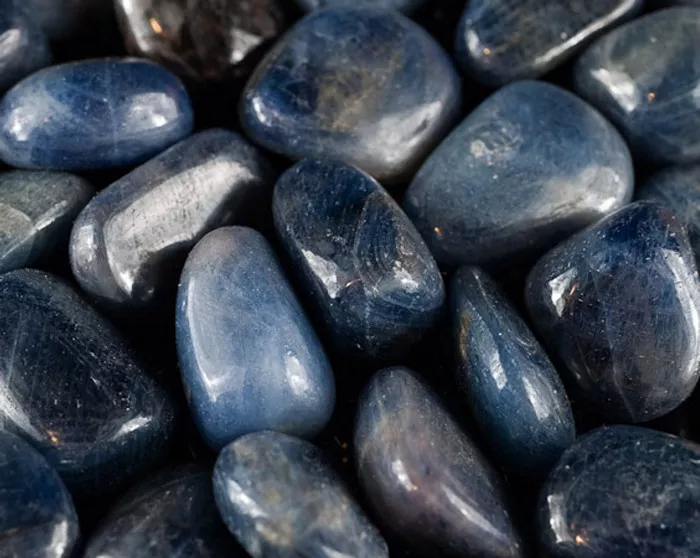Tanzanite is a mesmerizing gemstone renowned for its captivating blue-violet color and rarity. Discovered relatively recently in Tanzania in the 1960s, tanzanite quickly captured the attention of gemstone enthusiasts and jewelry connoisseurs worldwide. However, the question remains: Just how rare is tanzanite? In this article, we’ll explore the rarity of tanzanite, its geological formation, and the factors that contribute to its scarcity in the gemstone market.
Introduction to Tanzanite
Tanzanite is a variety of the mineral zoisite and is prized for its vivid blue to violet hues, which can range from pale lavender to deep sapphire blue. Its unique coloration is due to the presence of trace amounts of vanadium within the crystal structure, which causes tanzanite to exhibit pleochroism—a phenomenon where the gemstone displays different colors when viewed from different angles.
The story of tanzanite’s discovery is as remarkable as the gemstone itself. In 1967, a Masai tribesman stumbled upon transparent blue crystals in the foothills of Mount Kilimanjaro in northern Tanzania. Recognizing the potential value of these stones, miners began extracting tanzanite from the earth, leading to the establishment of the world’s only known tanzanite deposit.
Since its introduction to the global market in the late 1960s, tanzanite has gained popularity for its rarity, beauty, and unique color. However, the scarcity of tanzanite is a topic of debate among gemstone experts, with some arguing that tanzanite is rarer than diamonds due to its limited geographic origin and finite supply.
How Rare is Tanzanite
To understand the rarity of tanzanite, it’s essential to consider its geological formation and the factors that contribute to its scarcity:
Geological Formation: Tanzanite is formed through a combination of geological processes that occur deep within the Earth’s crust. The gemstone is typically found in metamorphic rocks, where heat and pressure cause the transformation of existing minerals into tanzanite crystals. The specific geological conditions required for the formation of tanzanite are relatively rare, making it challenging to find new deposits of the gemstone.
Limited Geographic Origin: Unlike other gemstones that are found in multiple locations around the world, tanzanite is found in only one region: the Merelani Hills in northern Tanzania. This limited geographic origin further accentuates tanzanite’s rarity and contributes to its status as a coveted collector’s item.
Finite Supply: Despite efforts to expand mining operations and discover new deposits, the supply of tanzanite remains finite. The existing tanzanite mines in Tanzania have been in operation for decades, and the quantity and quality of tanzanite extracted from these mines are subject to depletion over time. As a result, the supply of tanzanite may become increasingly scarce in the future, further enhancing its rarity and value.
Environmental and Social Factors: Mining tanzanite is a labor-intensive process that involves significant environmental and social challenges. The remote location of the Merelani Hills, coupled with the region’s rugged terrain and harsh climate, makes tanzanite mining a difficult and costly endeavor. Additionally, the mining industry in Tanzania is subject to regulations and policies that aim to protect the environment and ensure fair labor practices, further complicating the extraction and distribution of tanzanite.
Factors Influencing Tanzanite’s Rarity
Several factors contribute to the rarity of tanzanite and influence its availability in the gemstone market:
Color and Clarity: The most valuable tanzanites exhibit a vivid blue to violet color with exceptional clarity and transparency. Stones with intense color saturation and minimal inclusions are considered rare and command higher prices in the market. Tanzanites with unique color combinations or optical phenomena, such as color zoning or asterism, are even more prized by collectors and connoisseurs.
Carat Weight: Larger tanzanite crystals are rarer than smaller ones and thus command higher prices per carat. However, finding large, high-quality tanzanite crystals is challenging due to the geological conditions required for their formation and the limited supply of gem-quality material.
Cut and Shape: The cut and shape of a tanzanite can also influence its rarity and value. Well-cut tanzanites with symmetrical proportions, excellent polish, and precise faceting are more desirable than poorly cut stones. Certain shapes, such as ovals, cushions, and emeralds, may be more popular and sought after by consumers, further enhancing their rarity and market value.
Origin and Provenance: Tanzanites with a documented origin from the Merelani Hills in Tanzania are considered more valuable than those from unspecified or unknown sources. Gemstones with a well-documented provenance and certification from reputable gemological laboratories are more likely to fetch higher prices in the market.
Conclusion
In conclusion, tanzanite is a rare and precious gemstone prized for its captivating blue-violet color and scarcity in the gemstone market. The limited geographic origin, finite supply, and geological formation of tanzanite contribute to its rarity and desirability among collectors and jewelry enthusiasts worldwide. As one of the most coveted gemstones in the world, tanzanite continues to captivate the imagination and inspire awe with its unparalleled beauty and allure.


